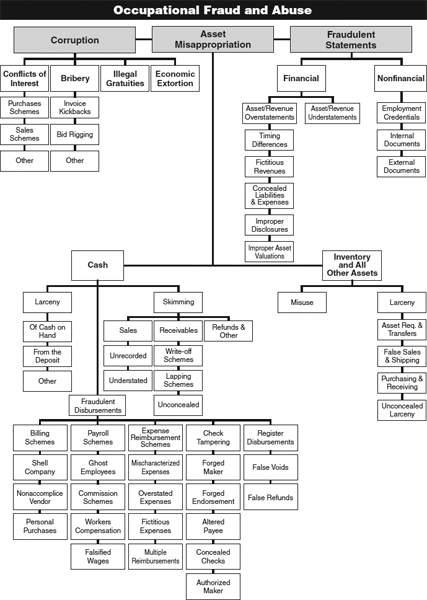
EXHIBIT 1-1
CHAPTER 1
INTRODUCTION
LEARNING OBJECTIVES
After studying this chapter, you should be able to:
| 1-1 | Define fraud examination and differentiate it from auditing |
| 1-2 | Understand the fraud theory approach |
| 1-3 | Define occupational fraud |
| 1-4 | Define fraud |
| 1-5 | Define abuse |
| 1-6 | Know the difference between fraud and abuse |
| 1-7 | Describe the criminological contributions of Edwin H. Sutherland |
| 1-8 | Understand Donald Cressey's hypothesis |
| 1-9 | Give examples of nonshareable problems that contribute to fraud |
| 1-10 | Understand how perceived opportunity and rationalization contribute to fraud |
| 1-11 | Explain W. Steve Albrecht's “fraud scale” |
| 1-12 | Summarize the conclusions of the Hollinger-Clark study |
| 1-13 | Summarize the findings of the 2011 Global Fraud Survey |
Assume that you are an auditor for Bailey Books Corporation of St. Augustine, Florida. With $226 million in annual sales, Bailey Books is one of the country's leading producers of textbooks for the college and university market and of technical manuals for the medical and dental professions.
On January 28, you received a telephone call. The caller advised that he did not wish to disclose his identity. However, he claimed to have been a long-term supplier of paper products to Bailey Books. The caller said that since Linda Reed Collins took over as purchasing manager for Bailey Books several years ago, he was systematically ...
Get Principles of Fraud Examination, 4th Edition now with the O’Reilly learning platform.
O’Reilly members experience books, live events, courses curated by job role, and more from O’Reilly and nearly 200 top publishers.

